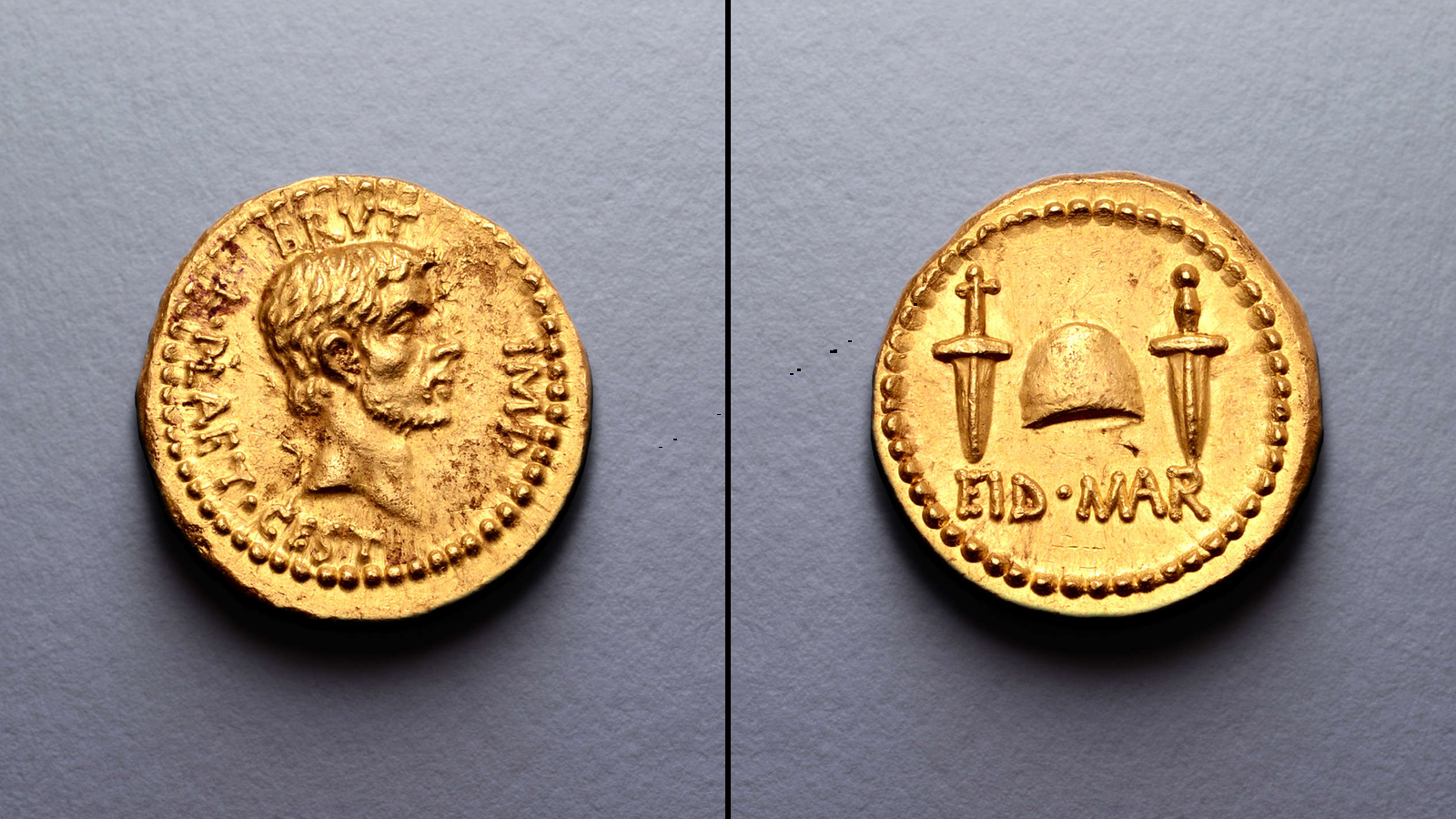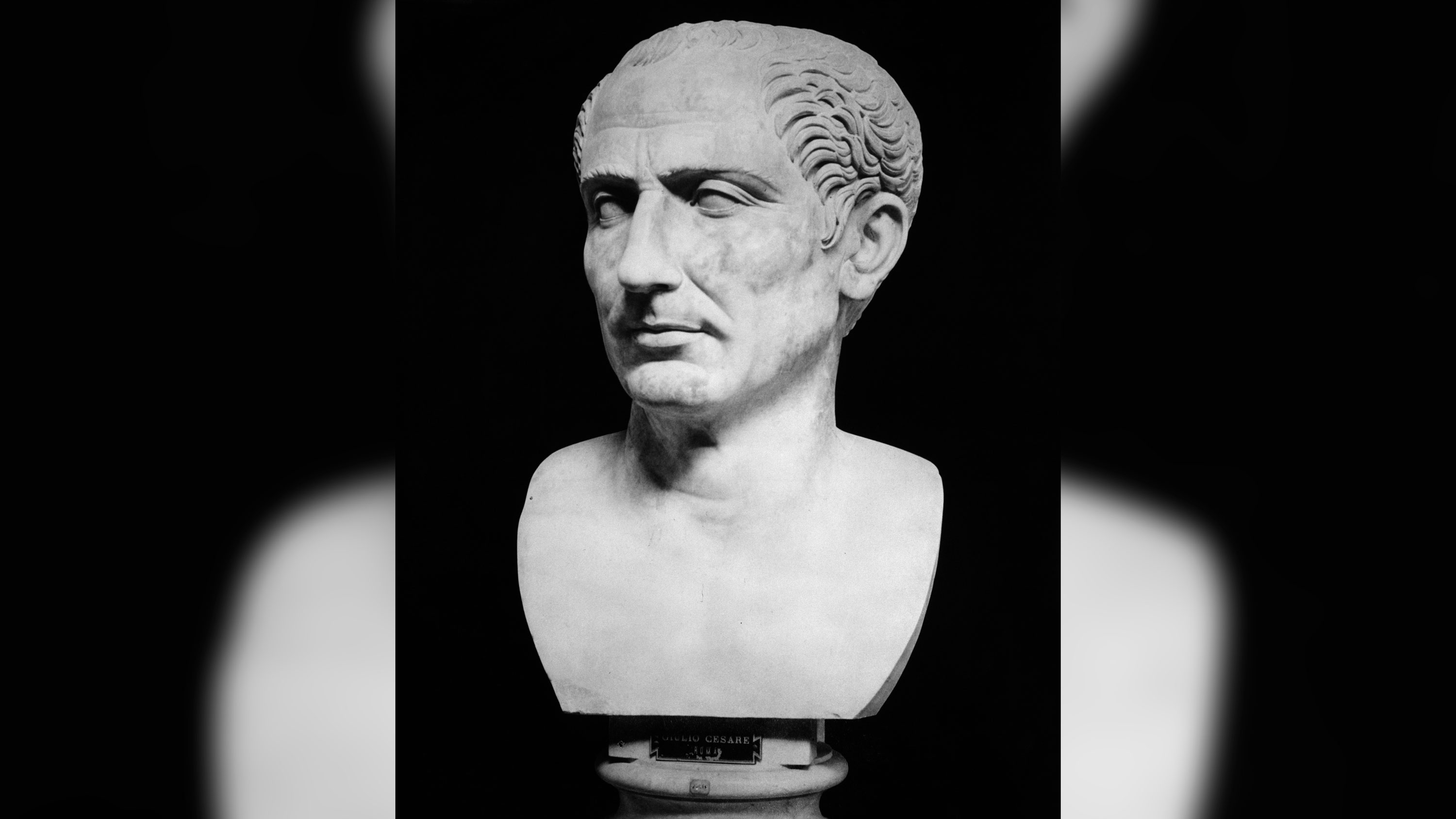Chad
The Living Force
CNN reported on 30th October that an ultra-rare coin, one of only three ever found and in near mint condition, celebrating Julius Caesar's assassination recently sold at an auction in London to an anonymous buyer for a record $3.5 million.
They write that the coin was issued by Brutus and was a "naked and shameless celebration" of the murder. It also features Brutus' portrait, the murder weapon and a 'liberty' cap.
I'm not sure how often these coins change hands but, if all the above is accurate, considering the situation on our planet and those currently in power right now, it seems to me to be pretty symbolic.
They write that the coin was issued by Brutus and was a "naked and shameless celebration" of the murder. It also features Brutus' portrait, the murder weapon and a 'liberty' cap.
I'm not sure how often these coins change hands but, if all the above is accurate, considering the situation on our planet and those currently in power right now, it seems to me to be pretty symbolic.
An ultra-rare coin celebrating Julius Caesar's assassination sells for a record $3.5 million
Published 30th October 2020 Rare Julius Caesar assassination coin sold for record $3.5 million

Credit: Roma Numismatics Limited
Written by Harry Clarke-Ezzidio, CNNLondon
An ancient gold coin described as a "naked and shameless celebration" of the assassination of Julius Caesar, featuring a portrait of one of the men who killed him, has set a new record for a coin sold at auction.
Bought by an anonymous bidder for £2.7 million ($3.5 million), the "aureus" coin features a portrait of Marcus Junius Brutus -- one of the ringleaders in the assassination of Caesar in 44 BC.

Julius Caesar was killed by Brutus and several others at the Theater of Pompey in Rome. Credit: Charles Phelps Cushing/ClassicStock/Getty Images
It also depicts the daggers used by Brutus and his co-conspirator Cassius to slay the ancient general in the Theater of Pompey in Rome, and a cap of Liberty -- a symbolic garment given to slaves upon their freedom.
It is inscribed with the phrase "Eid Mar" -- the Ides of March -- a reference to March 15, the date of Caesar's death.
The coin was issued by Brutus two years after the assassination, in 42 BC.
"In an act of unparalleled braggadocio, we are at once presented with the murder weapons used to slay Caesar, the precise date of the deed, and the motive," Richard Beale, managing director of Roma Numismatics, the London auction house that sold the coin, wrote in a press release, describing the aureus as a "naked and shameless celebration" of the assassination.
Caesar's death is said to have been fueled by the belief among Roman politicians that he intended to make himself king.
Having been appointed "dictator perpetuo" -- dictator for life -- just two months earlier, Caesar was killed by a group of senators, including friends and people whom he had previously pardoned.
Brutus subsequently killed himself after losing the Battle of Philippi to Caesar's nephew and heir, Octavius, and friend Mark Antony.
Despite its age, the coin is in near-mint condition, and is one of only three known to exist.
The previous record price for a Roman coin was set in 2008, when a bronze sestertius of the Emperor Hadrian sold for around $2.5 million. The previous record for any coin was held by ancient Greek gold stater, which sold for $3.25 million in 2012.
The headline of this story was updated to match the USD conversion of the final sale price in the article text.
Last edited:

